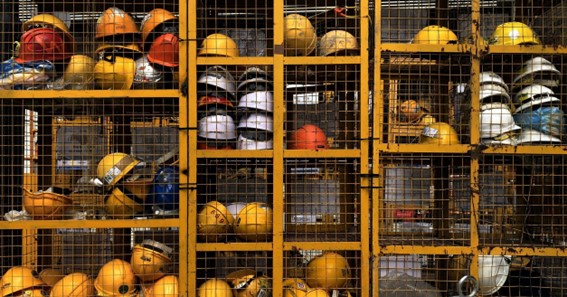Trade professions are the lifeblood of the US’ economy and infrastructure, whether helping build the next generation’s housing and facilities or providing the materials that fuel production and commerce. Crucial as these roles are in the American story, they are also wholly dangerous.
The statistics relating to casualties in trade environments cannot be ignored. According to the Department of Labor, the number of fatalities in construction was at a five-year high in 2020, even during the global disruption of the coronavirus pandemic. As such, the mechanisms that keep workers safe are more important to adopt and understand than ever. What follow are some of the more common ways workers are kept safe.
PPE
Personal protective equipment, or PPE, is a form of workplace safety equipment with which most people will be most familiar. PPE is an extremely broad field, comprising wearable equipment that affords protection to specific parts of the body against specific hazards.
In both construction and manufacturing environments, hearing protection is particularly important. Both environments generate excessively loud noises, as well as a consistent volume of noise louder than is healthy for the ear. As such, ear plugs are worn to protect the ears from long-term damage.
Click here – Why Autodesk Utility Design Are In Trend Now
Gloves are a common sight, too, as a form of protection against a number of hazards. Nitrile gloves protect the hands from chemical irritation, while heavier-duty workman’s gloves afford better grip on objects as well as cut or slash resistance.
Eye and face protection, in the form of eye goggles or face shields, protect from flying objects and debris. They can also protect from light, as with welding masks designed to allow safe viewing of the welding process.
Strain Gauges
Safety on-premises is not just dictated by the last-resort PPE worn by workers. Monitoring and measurement are also crucial endeavors for understanding the state of risk at any given moment. An example can be found in the form of strain gauges, which are electronic components used as a vital part of many failsafes across construction and manufacture.
Strain gauges are components, the resistance of which changes under the influence of external tensile or compressive force. These are useful in the detection of untenable strain on equipment, in service of pro-active maintenance of dangerous construction or manufacturing devices.
Light Curtains
In manufacturing and production environments, complex and bespoke machines are used to fabricate and construct products, components or elements. The manufacturing chain in a given plant involves multiple separate machines, connected by conveyors and other equipment. These machines, whether through high-pressure hydraulics or fast-moving parts, are extremely dangerous to operate, let alone maintain – and have numerous points of entry that can allow catastrophic injury.
Click here – Tips for ensuring your vehicle runs smoother for longer
One common safety measure for these installations is the light curtain or light barrier, which detects objects passing through it and activates an emergency cut-off. Their resolution can be customized to allow the pass-through of components, but shut off when detecting an object of unusual size – be it a misplaced part or a limb.






